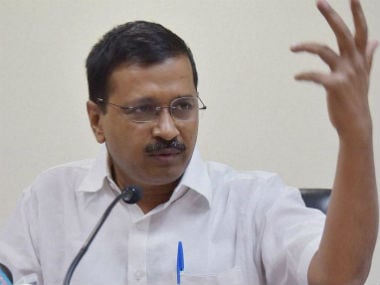The last few days in Delhi should have seen multiple red alerts. Unfortunately this city doesn’t know what a red alert is since it doesn’t have one. On Thursday, Chief Minister Arvind Kejriwal inaugurated 20 Continuous Ambient Air Quality Monitoring Stations. [caption id=“attachment_4190597” align=“alignleft” width=“380”]  File image of Delhi chief minister Arvind Kejriwal. Getty images[/caption] This will add to the 28 stations: Four run by the Delhi Pollution Control Committee (DPCC), eight by the Met department and the rest by the Central Pollution Control Board. In addition to these, there are also other monitors at the US Embassy, SAFAR monitoring network and a few other agencies. Monitors are essential in a city like Delhi, where air pollution levels vary sharply in different areas. Monitoring allows us to understand what is happening, but the next step is how it helps guide policy and enforcement. A 2012 World Health Organisation (WHO) study found that 3.5 million premature deaths are caused annually from indoor air pollution and 3.3 million from outdoor air pollution, far more than AIDS and malaria combined. These apocalyptic levels of polluted air will kill many citizens of Delhi, but it will take a long time for the carcinogens in our lungs to suffocate us. We in Delhi are being condemned to a slow, silent death and it is heart-wrenching to see government inaction, uncertainty among most commentators and apathy among citizen groups. On Wednesday, the US Embassy’s outdoor monitor hit a reading of PM 2.5 reading of 1486 ug/m3 and the team at Help Delhi Breathe took readings of 1473 ug/m3 at India Gate. When London’s air pollution spiked in 1952, it threatened to pull down Churchill’s government. We need a similar threat to our political establishment. Citizens need to come together and demand the right to clean air. People find it hard to believe what they cannot see, it is hard to mobilise against what is not visible and agreed upon. Monitoring and publishing air quality data make the nearly visible abundantly clear. Imagine trying to go on a diet without having a weighing scale, and without seeing what you’re eating. Without an air quality monitor, you have no idea what exactly the level of air pollution is and how it’s changing. In a city like Delhi where the pollution levels vary sharply in different areas, more monitors are definitely useful. But what’s important is how this data is going to be collected and used. The data from these stations provide no information on the chemical makeup of the particles, it can still be used to pinpoint the pollution sources to some extent. For example, during events where firecrackers are used (Diwali and winter weddings) and crop burning in neighboring states, data clearly shows that the PM 2.5 reaches hazardous levels. The government has shown some initiative after these apocalyptic smog days have set in, but that response has been limited and largely ineffective. The government needs to have a well-structured plan of action from monitoring and collecting data to policies around instituting health emergencies and red alerts. Monitoring is the only way forward to understand, create standards, track, enforce and finally break the cycle of air pollution. By collecting data and analysing it, we can assess how bad air pollution is day to day, identify areas that are more acutely polluted than others and over time identify sources of pollution. This data can be further overlaid with traffic information, weather and wind data to begin to forecast air pollution. There’s a lot to learn from cities in the world who’ve cleaned up their air by enforcing strict air quality policies. According to a study recently published in Environmental Research Letters, China has seen a drop of 21.5% in PM2.5 levels between 2013 and 2015 by enforcing aggressive emission control measures. In the US, before the Clean Air Act of 1970, Los Angeles had very bad air for two decades. The Act focused on setting an air quality standard that was led by a measurement of its effects on public health and then the government went ahead and passed policies that forced industry and other polluters to cut out their emissions and clean up the air. Our government must consider partnerships with private sector parties that have a larger number of outdoor monitors with greater accuracy to add to the data of Delhi-NCR. In the immediate term, the collected air quality data can be used to set alerts so citizens are aware of what current pollution levels are and so that they can protect themselves. In the mid-term, the data can be used to identify trends in air pollution, to anticipate the high season and to be proactive in building messaging to the public before hazardous levels hit the city. In the long term, a large multi-year data set on air pollution can be used to identify sources of air pollution and repeat offenders, and then enable policymakers to pass laws to curb sources of air pollution. Nita Soans is CEO India for Kaiterra, creators of the Laser Egg air quality monitors, focused on monitoring and mapping air pollution on a global scale.
On Thursday, Chief Minister Arvind Kejriwal inaugurated 20 Continuous Ambient Air Quality Monitoring Stations.
Advertisement
End of Article


)




